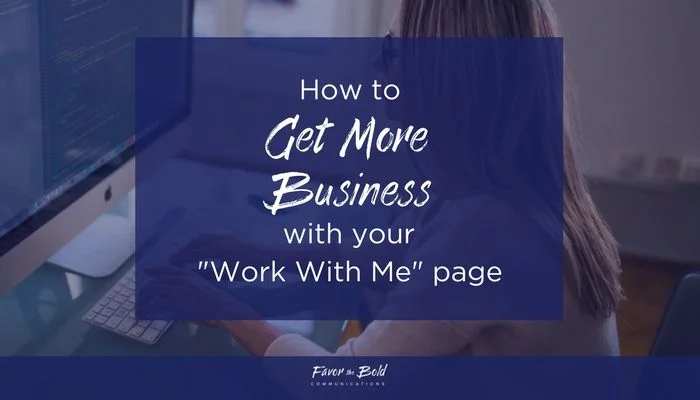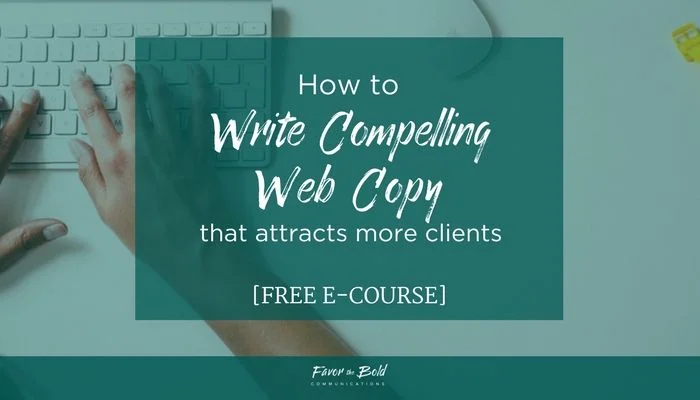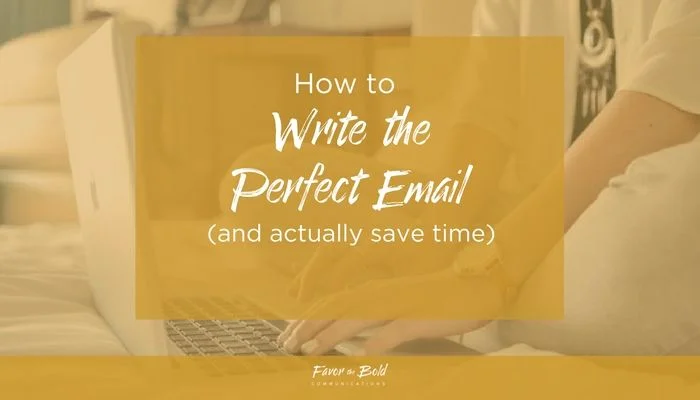Can I brag for a second? Yes, it’s a little cringe-worthy, but there’s a lesson here, I promise. Here it goes:
I almost never have to sell my services.
I know, I know, feel free to slap me the next time you see me. But it’s true: my dream clients seem to just come to me. Usually, they know they want to work with me even before our consultation. I don’t actually have to “sell” anything.
Because my brand does the selling for me.
I’ve written a ton on building a compelling brand-- check out this series or this post for a taster. Yet I keep seeing the same mistakes over and over when it comes to creating a brand that sells what you do to the people who want to buy it.
1. You try not to turn anyone off
If you read my post on effortlessly selling what you do, you know: you need to know who you’re talking to in order to sell to them.
But just knowing who your ideal client is isn’t enough.
In order to truly attract the people you want to work with, you have to be willing to only attract those people-- and repel the rest.
But of course, that’s easier said than done.
When you’re struggling to pay your rent, any client’s a good client, right? The idea of turning off anyone who might want to work with you feels like a missed opportunity.
So you try to appeal to the widest audience possible: on your website, you list every pain point any potential client’s ever had. You don’t say who you’re for because what if someone else wants to work with you? You have a whole menu of services just in case someone comes to you for that random thing you don’t even like doing.
And it’s costing you clients.
Because your ideal clients don’t want a jack-of-all trades. When you need a screwdriver, you don’t reach for a Swiss Army Knife.
Hell, even a Swiss Army Knife calls itself a knife.
So get hyper focused on who you serve and what you do for them.
Get bold about who you are and what you stand for.
Get clear on your mission, your values, your voice.
And then go for it 100%.
It’s hard, I know. I struggle with it as well. I know I get the best results for service-based solopreneurs, but I also love my product-based clients and hate to leave them out.
But you (and I) have to be honest: what do you do the best-- and for whom?
You owe it to yourself--and your clients-- to sell only that.
2. You put too much focus on differentiation
My fellow marketers might disown me for this one, but I’m sticking to it: differentiating yourself from your competition is NOT your first priority.
Here’s why.
The first goal of your brand and messaging is to show your ideal clients that you can solve their problem.
That’s it.
It’s not to tell them about your methodology.
It’s not to show them how you’re better than the other options.
It’s not to tout yourself as the all-knowing expert.
All of those things will come, but before you even think about them, you first need to answer the question your audience will be asking the second they come in contact with you:
Why should I care?
Because the fact is, if someone doesn’t care about what you offer, they won’t care how you’re different.
Your focus should be on your potential client, not yourself: what problem you solve for them, why they need you and what they get.
Hit those messages first and then tell them why you’re the best one to do it.
3. You’re not appealing to emotions
I’m always worried about including this one because I’m afraid people will go too far the other way. So let me be clear: appealing to emotions does not give you permission to speak in vague generalities.
If you start with that “live the life you want” BS, I’m outta here.
That said, if your web copy, sales pitch and marketing materials are all focused on facts, figures and features, you’re likely costing yourself clients.
Because buying is an emotional decision: we buy the things we want, not the things we need.
Sure, some logical reasoning goes into the buying decision, especially for B2B business. But at the end of the day, people will only buy from you if they want to.
And they’ll only want to if you appeal to their emotions
So get in your customer’s head and uncover their pains, fears, hopes, desires.
Figure out where they are today and where they want to be tomorrow.
Dig into what brought them to you and how they’ve tried to fix their problem in the past.
And then use your messaging to show you understand them.
To do that, mix the tangible results they’ll get from your solution with the emotions they’ll feel once their problem is solved. When you describe their pain point, don’t forget to describe how it feels to have it.
Because remember, people don’t buy products and services, they buy what those things will get them.
And when you can paint the picture of that end result so vividly they can feel the relief of solving their problem?
Well, you’ve got yourself another client.
4. You don’t have a strong brand voice
Remember when I was bragging about my ideal clients just showing up without having to sell to them? This is why.
It’s something I hear constantly, from my email list subscribers, to people who contact me through my website, to blog commenters, to potential clients. They all say the same thing: “I just love your whole vibe.”
Let’s be clear. These people have never actually met me. They don’t know me at all beyond my writing and the occasional social media post. They don’t know that my ‘vibe’ usually looks like me cursing at my computer screen in sweatpants and a messy side-bun.
Yet they take time out of their day to engage with me-- and eventually hire me-- because they ‘love my vibe.’
That’s the power of a strong brand voice.
One of the biggest mistakes a business can make is underestimating the power of being liked.
I don’t mean appealing to everyone (see mistake #1) or being seen as “nice” (see: every time I use a swear word, rant about productivity killers, and make fun of pant suits with pastel-colored button-down shirts.)
No, I mean having a personality that comes through in your brand and attracts your ideal clients-- and only your ideal clients.
Because let’s face it, certain personalities attract certain kinds of people-- and repel others. Your brand voice is both a magnet and a filter: it attracts your ideal clients and filters out the people who aren’t a good fit.
And the stronger your brand voice? The more you’ll be remembered, the more your target audience will relate to you-- and the more they’ll be compelled to want more.
Because that's how your business becomes successful: you don’t just build a client list, you build fans who see themselves in your brand.
So don’t be afraid to show your brand’s personality. Don’t be scared to turn some people off. Don’t be worried that some people “won’t get it”-- you don’t want to work with them anyway.
And besides, you’ll be too busy working with the ones who do get it to worry about everyone else.











![How to boost your brand offline-- and get more business [Part 3]](https://images.squarespace-cdn.com/content/v1/5671d7a82399a31f114f4c55/1477565172008-2K7456WNHWYM99T12HTV/How+to+boost+your+brand+offline--+and+get+more+business.jpg)